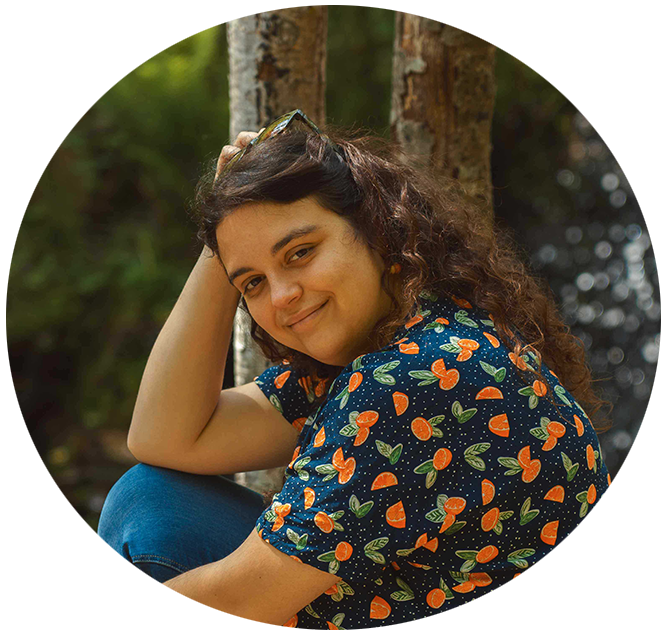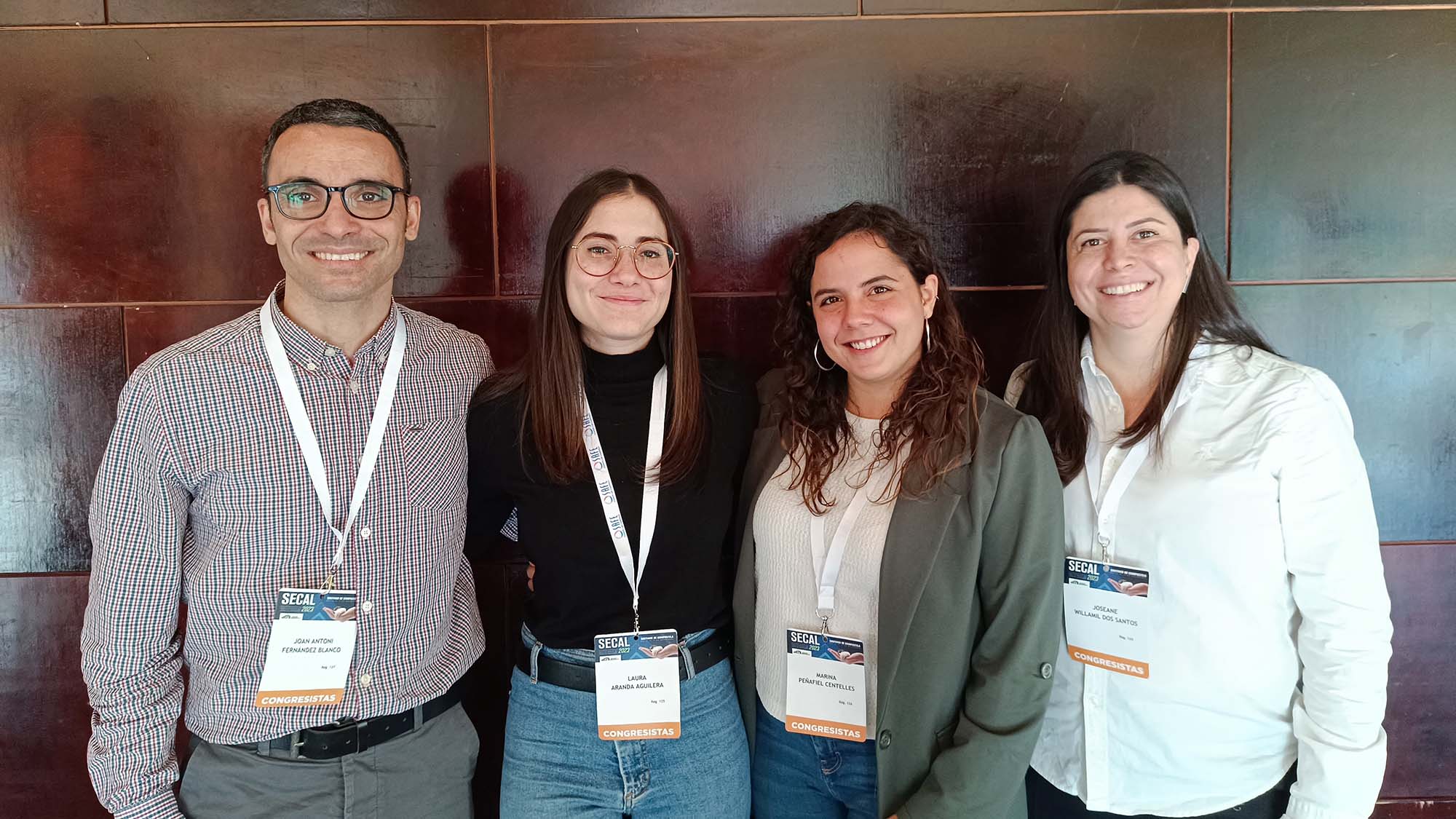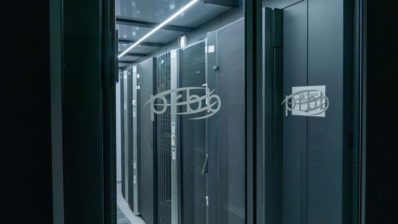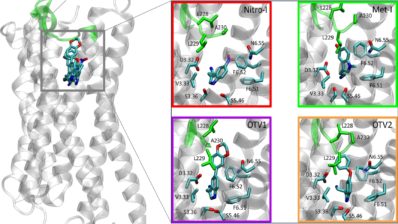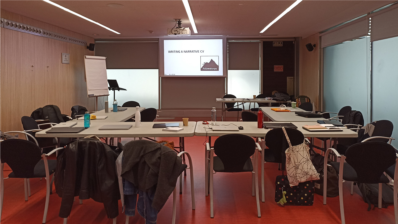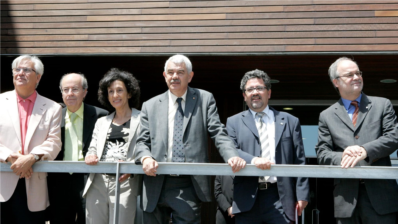In mid-November, the 17th Congress of the Spanish Society for Laboratory Animal Sciences (SECAL) was held in Santiago de Compostela. As members of SECAL, some of the staff of the animal facility of the Barcelona Biomedical Research Park (PRBB) participated and presented two projects related to animal welfare on which they have been working lately.
The first poster evaluated the use of antibiotic immersion for the treatment of fight wounds in Xenopus laevis frogs. This work, carried out by staff from the animal facility of the PRBB Consortium, Charles River Laboratories and Kenkox, has not only demonstrated its effectiveness and ease of application, but has also allowed for an in-depth study of the antibiotic treatment of this amphibian. This is relevant because, although it has been an animal model in research for many years, there are very few centres that work with it and the indications for the treatment of its diseases are based on recommendations and extrapolations from other species.
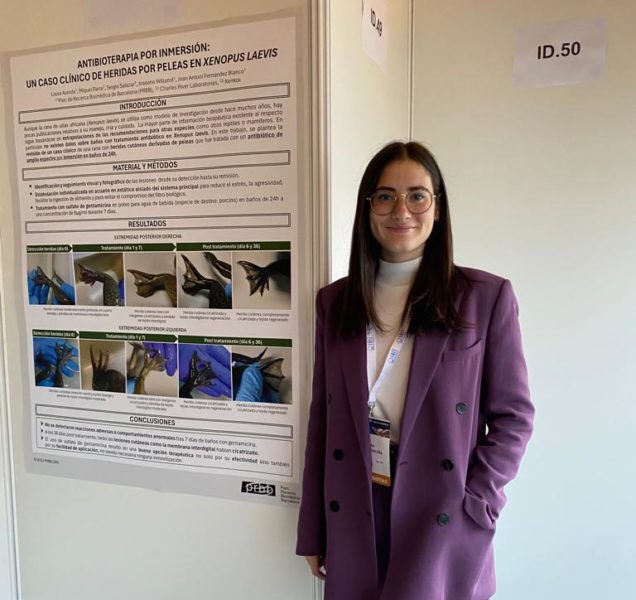
The second poster, also by staff from the PRBB Consortium and Charles River Laboratories, proposed the implementation of a new rotational environmental enrichment programme in mice and received the “Founding Partners Award for the best paper voted by the attendees”.
Environmental stimuli into the non-natural habitat of animals to improve their physical and psychological wellbeing.
Environmental enrichment refers to the introduction of environmental stimuli into the non-natural habitat of animals to improve their physical and psychological wellbeing. But what is the current environmental enrichment for the mice in the PRBB animal facility and how can it be improved?
We talked to Pep Moreno and Marina Peñafiel, Supervisors of the PRBB animal facility, to find out.
How did the idea of improving environmental enrichment come up?
In the animal facility we undergo controls and audits that allow us to both evaluate the facilities and propose improvements to increase the quality of life of the animals. These ‘exams’ are becoming more and more exhaustive and stringent, as it is important that we do not become stagnant in our work, and even more so when it comes to animal welfare.
The Association for Assessment and Accreditation of Laboratory Animal Care International (AAALAC International) is the body responsible for promoting the best conditions for animals used in research. AAALAC is at the forefront of the scientific community, making proposals to ethically advance science and animal research where there are no alternatives. The PRBB animal facility is accredited by AAALAC and it was from this body that we received the proposal to improve the system of environmental enrichment by mice that we currently apply.

Our facilities have been up and running since 2007 and, since then, we have made many changes. We are in continuous evolution and we regularly carry out tests like this one that allow us to update and improve our service. Environmental enrichment is therefore another of these improvement projects that we are carrying out and it is also a topic of interest among the community – which explains the interest of participants at the congress for our work. It represents an improvement in animal welfare and it also affects us, the staff of the animal facilities, in our day-to-day work.
What is the improvement you propose, specifically?
After the AAALAC recommendation we started working on a proposal. The environmental enrichment we currently provide to the mice is based on cardboard tubes and tissues, which we introduce in different quantities depending on the number of animals in each tank. The interactions of the animals with these materials are diverse, but they serve mainly as interaction and shelter, making a nest for themselves, thus improving their physical and psychological wellbeing.
On this basis (which we want to maintain), we wanted to introduce new materials on a rotating basis, changing them every two weeks, so that they could provide new stimuli for the mice.
Initially, we chose five materials, but two of them – the curly paper and the dark cellulose flakes – were quickly discarded because they were difficult to handle and because of their colour, which makes it difficult to detect blood and possible secretions from the animals. Therefore, we focused on white cotton tubes, wooden blocks and white cellulose flakes. So, since the summer of 2022 we have been evaluating the use and interaction of the mice with the material (whether they use it for nesting, gnaw on it, etc.), the durability of the material, the ease of insertion and removal of the material in the basin, its ease of reproduction and the economic cost and profitability.
The results of this environmental enrichment improvement have been satisfactory and have shown that the most optimal materials, in terms of mouse interaction and management by the animal facility staff, are cotton wool tubes and wooden blocks. That is why we now want to implement this new rotational system: in addition to providing the mice with a base enrichment, every two weeks they would be introduced to one of these two new materials with which they could interact. We believe this is a viable proposal and is a significant improvement on the current enrichment system.
Have you started implementing your proposal then?
We have not yet started to implement this improvement. One of the objectives of this project is to simultaneously establish as homogeneous an enrichment system as possible for all the mice housed in the PRBB. This would ensure, firstly, that the welfare of all mice would be equally affected by the proposed changes and, secondly, an optimisation in management, thus reducing the likelihood of errors and making it easier to care for the animals, as we work with a large volume of trays.
“Environmental enrichment is essential for animal welfare”
This proposal was passed on to the PRBB Animal Experimentation Ethics Committee (CEEA-PRBB) and to the researchers through the Animal Facility Users Committee (CUA). All users of the animal facility know that environmental enrichment is essential to ensure the welfare of the animals. That said, there are research groups studying animal behaviour in our facilities, who expressed their doubts as to whether the introduction of varying stimuli could have a direct impact on the results of their research. In this sense, we will continue to work hand in hand with the researchers and a list will be drawn up of the groups that justifiably wish to maintain a constant enrichment of the tanks associated with their projects, so that this exception can be approved by the CEEA-PRBB. On the other hand, the Generalitat confirmed to us that, in the event of the implementation of rotational environmental enrichment, it will not be necessary to communicate it as a modification for each of the already authorised procedures.
